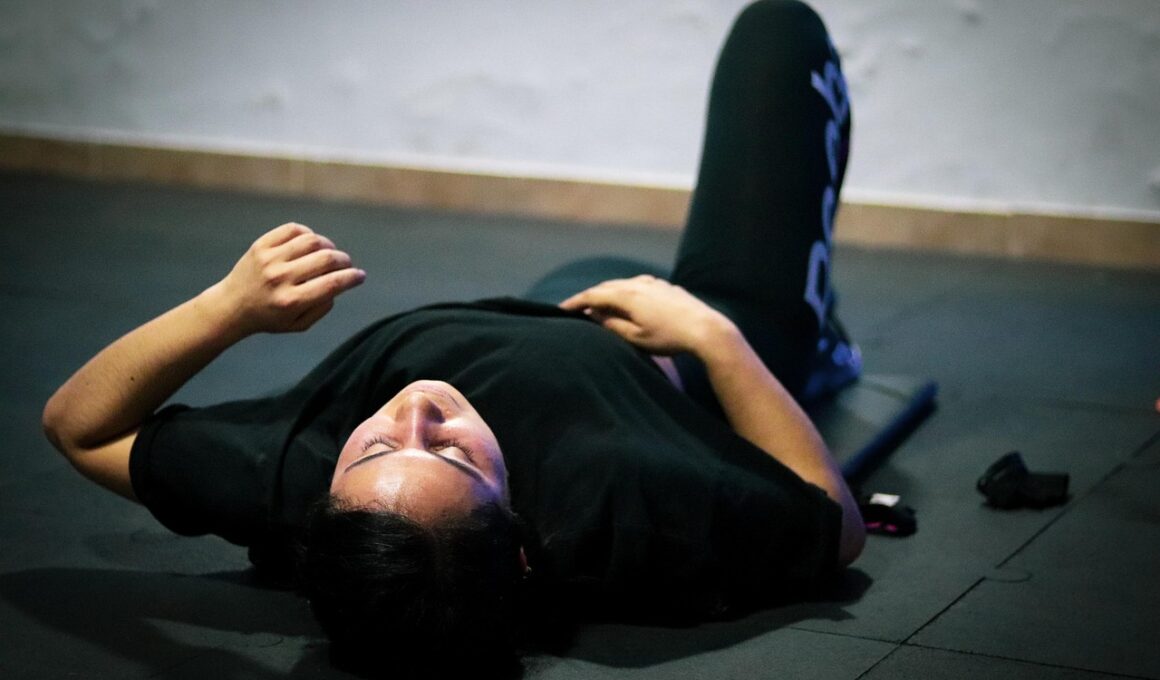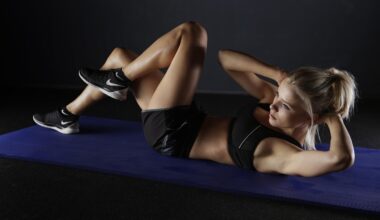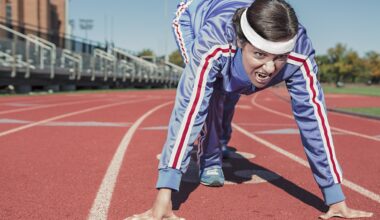Adaptive Core Training Equipment for Elderly Fitness Enthusiasts
As we age, maintaining core strength becomes increasingly important for overall fitness and mobility. Core training exercises help improve balance, stability, and posture, which are crucial for seniors. Adaptive core training equipment is designed to be user-friendly and effective, accommodating various fitness levels. The ideal equipment allows elderly individuals to engage in workouts safely and comfortably while strengthening their core muscles. Additionally, incorporating this specialized equipment can lead to increased confidence in performing daily activities. Some commonly recommended equipment includes stability balls, core trainers, and resistance bands. These tools provide varying levels of assistance and challenge, enabling seniors to progress according to their personal fitness goals. Importantly, seniors should consult with healthcare professionals before starting any new fitness program. This precaution ensures that any equipment chosen aligns with their health status and mobility capabilities. With adaptive core training equipment, elderly fitness enthusiasts can continue their journey toward improved health. There is a wide array of resources, including local fitness classes, community centers, and online platforms. Embracing core training provides seniors the opportunity to remain active and engaged, enhancing both the quality and enjoyment of life.
Stability balls are a popular choice for core training among elderly fitness enthusiasts, offering numerous benefits. These inflatable balls promote balance and core stability while being adaptable to various exercises. Seniors can perform gentle seated exercises on stability balls, allowing them to engage their core muscles without unnecessary strain. Furthermore, they can perform gentle exercises that cater to individual skill levels, making them accessible for everyone. The act of simply sitting on a stability ball helps strengthen the postural muscles, which improves one’s balance over time. Incorporating stability balls into regular workouts also allows for versatility; seniors can practice upper body and lower body exercises. For safety, it is essential to choose the right size ball depending on the user’s height. Additionally, users should be mindful of their surroundings, ensuring they have ample space while exercising with the ball. By utilizing stability balls, seniors can make their core training routines enjoyable and effective. It’s recommended to engage in group classes to boost motivation and provide social interactions. Overall, stability balls are valuable tools in the journey toward improved core strength for elderly individuals.
Core Trainers for Enhanced Stability
Core trainers are another excellent option for elderly fitness enthusiasts seeking to enhance their core strength. This equipment is typically designed to provide stability, allowing users to perform a wide variety of exercises safely. Core trainers encourage seniors to engage in strength-building movements while ensuring proper alignment. Ideal core trainers often include secure straps or handles for added support, as well as adjustable features for personalized fitness experiences. These trainers can be particularly helpful for those aiming to improve their balance or recover from injury. Additionally, core trainers are designed with safety considerations, making them suitable for senior users. It is essential to choose a trainer that aligns with one’s mobility abilities. Exercises like seated leg lifts, seated twists, and modified planks can be seamlessly integrated into personalized workouts. As seniors progress in their fitness journey, using core trainers can lead to improvements in overall strength and functionality. Furthermore, core trainers can foster community engagement by encouraging participation in group classes, where seniors motivate one another. In conclusion, core trainers serve as valuable instruments for strengthening the core muscles in elderly individuals.
Resistance bands are an incredibly versatile and effective tool for seniors looking to improve core strength. These elastic bands provide varying degrees of resistance, making them suitable for users with different levels of fitness. Resistance bands can be used to perform a wide range of exercises targeting the core, such as seated rows and torso twists. By utilizing different resistance levels, seniors can gradually increase their strength while adjusting the difficulty according to their abilities. Incorporating resistance bands into a regular workout routine is also beneficial for enhancing flexibility and overall muscle tone. Furthermore, they are easy to store, transport, and take up minimal space, making them an ideal choice for home workouts. Seniors may also find it helpful to use resistance bands in conjunction with physical therapy exercises prescribed by healthcare professionals. This integration helps ensure a safer approach to fitness, particularly for those recovering from injuries or surgeries. Engaging in resistance band workouts fosters empowerment and independence, as seniors actively participate in shaping their fitness journeys. In summary, resistance bands are a smart investment for elderly individuals focused on core training and improved physical health.
Balance Boards for Core Strength
Balance boards are ideal for seniors seeking a fun and engaging way to strengthen their core muscles and improve balance. This equipment is typically lightweight and can be easily incorporated into various workouts at home or in fitness centers. Balance boards encourage the user to maintain stability while challenging their core muscles. Engaging in exercises on balance boards helps enhance coordination, which is crucial in preventing falls among seniors. Many balance boards are specifically designed with safety features, such as grips or textured surfaces, to support easy use. The blend of stability and movement allows users to reap maximum benefits from their core workouts. Beginners can start with simple exercises, gradually advancing to more challenging routines as their strength and confidence grow. Additionally, balance boards can be excellent tools for social and group exercises, fostering camaraderie among seniors while doing workouts together. Users are often encouraged to set personal goals and track their progress, further enhancing their motivation and commitment to fitness. Thus, balance boards not only aid in core strength but also contribute to social interaction and community spirit.
Another fantastic option for elderly individuals focusing on core training is a Pilates reformer. This piece of equipment allows seniors to perform a myriad of exercises tailored to strengthen their core muscles while fostering flexibility. Pilates reformers utilize springs for resistance, allowing for gentle yet challenging workouts, which can be adjusted according to individual needs. Working with a Pilates reformer provides enhanced support through guided movements, making it easier for seniors to engage their core. Many seniors appreciate the low-impact nature of Pilates, making it ideal for those with joint issues. Classes are frequently available in local communities, and many qualified instructors specialize in Pilates for seniors. Participating in group sessions not only motivates individuals but also creates a more social environment for fitness. Furthermore, it’s essential for users to listen to their bodies and progress at their own pace, ensuring both safety and effectiveness in their training. Integrating Pilates reformers into fitness routines can lead to enhanced stability and overall physical health. In conclusion, Pilates reformers are a valuable resource for encouraging core strength in elderly fitness enthusiasts.
Conclusion: Embracing Core Training
In conclusion, incorporating adaptive core training equipment into fitness routines is essential for elderly individuals aiming to enhance their core strength and overall well-being. Every piece of equipment, from stability balls to resistance bands, offers distinct advantages tailored for seniors, allowing them to engage at their desired level of intensity. It’s vital that seniors choose equipment appropriate for their physical capabilities and always consult with healthcare professionals before beginning new exercises. Building a community around core training is also beneficial, as seniors can motivate each other in group classes or various local settings. Additionally, regular participation in core strengthening exercises fosters independence and confidence, leading an enriching lifestyle. Encouraging physical activity not only empowers elderly individuals but also promotes better mental health and well-being. Overall, the journey toward core strength is achievable, providing the foundation for improved balance, stability, and quality of life. As seniors embrace this opportunity, they open the doors to new adventures and healthier lifestyles. Recognizing the importance of engaging in core training can be the key step towards longevity and enhanced quality of everyday living through physical fitness options.
In summary, core training is not only beneficial but also essential for elderly fitness enthusiasts. By utilizing adaptive equipment tailored for their unique needs, seniors can engage in a fulfilling and effective fitness regimen. With the right mindset and commitment, elderly individuals can achieve remarkable improvements in their core strength, ultimately enhancing their mobility and overall health. Staying active in later years requires incorporating engaging and suitable exercises, making adaptive core training an invaluable component of senior wellness. The advantages of stronger core muscles include enhanced balance, increased stability, and decreased risk of falls. These factors collectively contribute to a healthier, happier lifestyle as seniors age gracefully. Moreover, creating a welcoming and supportive fitness environment can foster community bonds, encouraging seniors to actively participate in classes and social activities. In summary, adaptive core training is a crucial aspect of elderly fitness that promotes resilience and quality of life. It opens avenues for growth, engagement, and enjoyment in an active lifestyle. Careful selection of appropriate equipment and exercises enhances the overall experience and effectiveness of training sessions. Ultimately, embracing these practices will lead to a more enriching and enjoyable elderly fitness journey.


